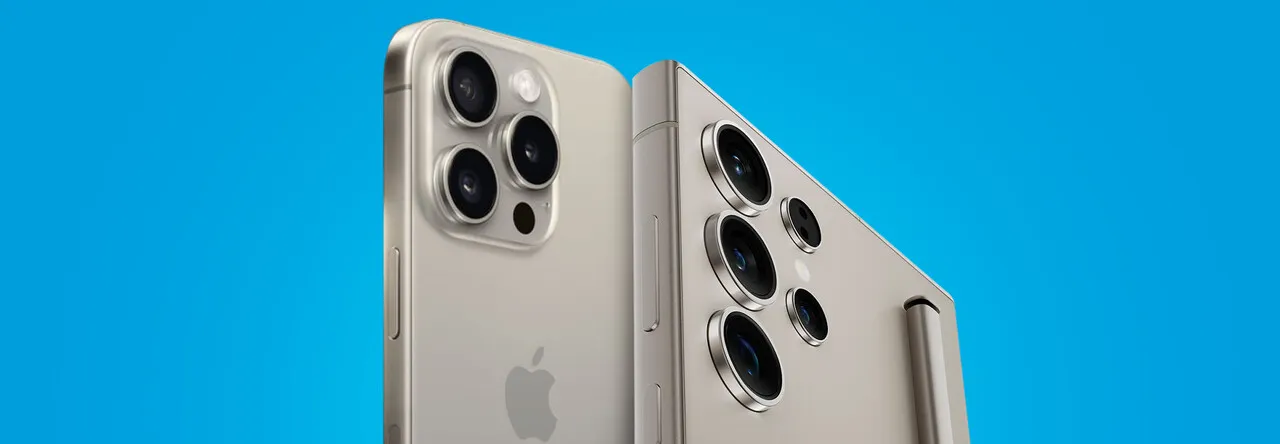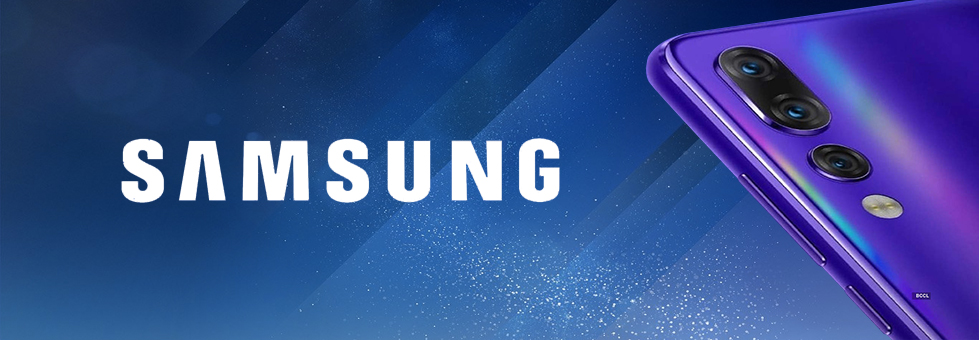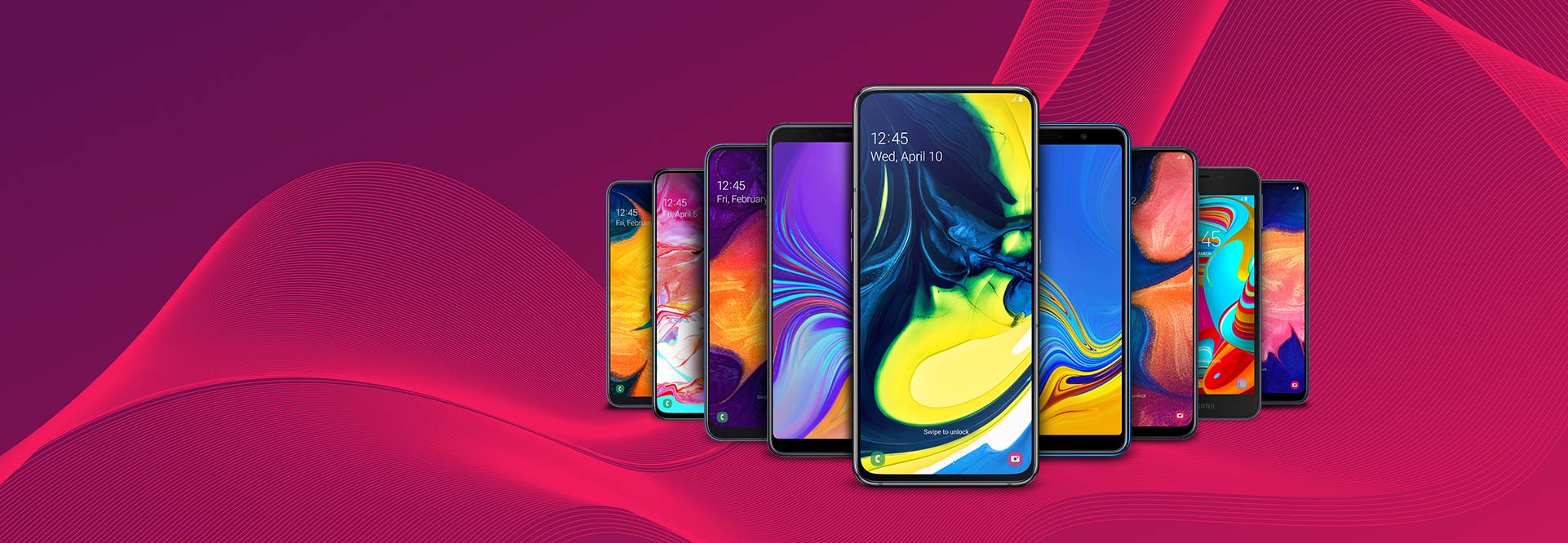Samsung Galaxy S24 Ultra vs Apple iPhone 15 Pro Max
Mondo Admin / 12-03-2024 / Tech
Samsung Galaxy S24 Ultra vs. Apple iPhone 15 Pro Max: Let's Help You Choose the Best
If you're torn between the Samsung Galaxy S24 Ultra and the Apple iPhone 15 Pro Max, first things first – you have excellent taste.
But with great power comes… a lot of confusion.
How do you choose between two phones that are overflowing with the most jaw-dropping features?
Don’t stress! We’re here to help you decide which one of these iconic smartphones is best for you. Let’s compare the most advanced Samsung and iPhone in the ultimate battle of the flagships.
Not a flagship fling
These top-of-the-range devices from the world's leading smartphone manufacturers scream “luxury”. Titanium frames. IP68 rated for dust and water resistance. Seriously tough screens made from next-generation glass. If durability and longevity are what you’re after, both the Galaxy S24 Ultra and iPhone 15 Pro Max are built to last. Plus, Samsung and Apple are committed to providing software updates and security patches for multiple years. We’re talking 7 and around 5 years respectively, so you can be sure that this ain’t no flagship fling!
Display: Handles the outdoors better than Bear Grylls
In the showdown of screens, only one snags the top spot for being bigger, wider and brighter. The winner of this round is none other than the Galaxy S24 Ultra. Now, don’t get us wrong, both phones have some of the best display technology around, but Samsung takes it up a notch. It flexes with a 6.8-inch screen, edging out the 6.7-inch screen on the iPhone 15 Pro Max. When it comes to brightness in the sunny outdoors, the Galaxy Ultra hits 2600 nits peak brightness compared to the iPhone's 2000 nits. And thanks to some innovative Gorilla Glass Armor, the Galaxy slashes screen reflections by a whopping 75%. So, if you're on the hunt for a display that handles the great outdoors better than Bear Grylls, the Galaxy S24 Ultra is the one.
Turn every moment into a photoshoot
We all have that friend or family member who turns every outing into a full-blown photoshoot – capturing everything from their morning coffee to their cat.
If you don’t know someone like this, well you're probably that person. And you’ll DEFINITELY be that person when you get your hands on either the Samsung Galaxy S24 Ultra or the iPhone 15 Pro Max because the cameras are so hard to resist.
The Galaxy S24 Ultra features four back cameras with outstanding zoom capabilities, upgraded night photography and brand-new AI features exclusive to the series. Highlights are a 200MP main camera, a 50MP telephoto camera with 5x zoom and 10x optical zoom and cinematic 8K video recording. Night photography has received a massive boost, reducing blur by 60% and videos recorded on the front or back cameras are clearer and more stable thanks to new noise reduction and stabilisation technology. And we can’t ignore the new camera AI packed inside the phone, which Samsung calls the ProVisual Engine. It unlocks a cascade of features, including 100x digital zoom and generative editing that fills in borders, removes reflections and repositions the subject or object.
The iPhone 15 Pro Max sports three rear cameras with innovative new designs for exceptional photos in many lighting conditions. Highlights are a 48MP main shooter that allows you to switch between three popular focal lengths, a new telephoto camera with a 5x zoom and debut tetraprism design and improved night photography powered by Apple’s Photonic Engine. The iPhone focuses more on hardware than software, giving you better control over your photos for a final result that’s closer to pro-level.
But which one takes the win? If you want to experience the new generation of AI, the Galaxy S24 Ultra is a no-brainer. But if you appreciate hardware over everything else, the iPhone 15 Pro Max has a little more to offer.
Neck-and-neck performance
No shocker here – the quickest, most powerful phones right now are the Samsung Galaxy S24 Ultra and the Apple iPhone 15 Pro Max. With the iPhone boasting the brand-spanking-new A17 Pro chip and the Samsung powered by the Snapdragon 8 Gen 3 chip optimised for the Galaxy, these phones aren't just fast; they're 'blink, and you'll miss it' fast. They are almost neck and neck on performance benchmarks, effortlessly powering through daily tasks, intensive AAA mobile games and demanding video recording and editing. Freezing and lagging don't exist here, so go ahead and jump between multiple apps, indulge in online shopping, book a holiday, catch up on series and snap random selfies to your heart’s content.
Both devices offer three storage options – 256GB, 512GB or 1TB. When it comes to RAM, the Galaxy S24 Ultra has upped its game from last year's model to 12GB, while the iPhone 15 Pro Max comes in with 8GB. But here's where the Galaxy steals the spotlight – it supports Wi-Fi 7, enabling it to support tech that's still on the horizon. Despite these differences, the performance is nearly equal, marking a surprising twist as the iPhone typically takes the lead over Samsung.
Bring AI to life
Smartphones will never be the same again. Leading the charge is the Samsung Galaxy S24 Ultra. Its chipset, alongside Samsung's One UI 6.1 software on top of Android 14, brings AI to life. It’s able to unlock some pretty cool features that are designed to make your life easier.
Besides the impressive AI camera features, you’ll also enjoy a quicker, more dynamic way to search online with Circle to Search and a whole host of translation capabilities that make communication in different languages, via calls and text messages, an absolute breeze.
If you’re wondering what happened to Apple’s AI, let’s just say it’s lost in translation when compared to the Galaxy. But there are a few AI features that offer unique experiences, such as StandBy Mode ensuring your widgets stay on your radar while your phone powers up; Live Voicemail, which turns transcriptions of incoming calls into readable messages; and the Check In feature, perfect for keeping your inner circle posted on your whereabouts. However, unlike the Galaxy, these capabilities aren’t exclusive to the series, it’s enabled on all iPhone models dating back to 2019 releases.
Batteries designed for flagship beasts
Do these rocket-speed phones have the stamina to keep up with your non-stop lifestyle? Considering that the Samsung Galaxy S24 Ultra and the Apple iPhone 15 Pro Max have the best features, these batteries know how to stay powered up. With a 5000mAh battery for the Galaxy S24 Ultra and a 4,441mAh battery for the iPhone 15 Pro Max, you're looking at over 7 or 8 hours of screen time. One charge goes a long way with these flagships.
The Galaxy goes all-in with wired charging speeds of 45W and 15W wirelessly. It supports reverse wireless charging too. The iPhone, on the other hand, has a wired charge of up to 25W, 15W wirelessly, and throws in the MagSafe support, featuring the new magnetic Qi2 standard.
Samsung Galaxy S24 Ultra vs. Apple iPhone 15 Pro Max: We have a winner!
Analysing these flagship phones side by side makes it very clear that they share numerous similarities - from lightning-fast performance and exceptional photography to solid designs and great battery life. But, believe it or not, we do have a winner.
And the champ is…
The Samsung Galaxy S24 Ultra!
It has levelled up massively from last year’s release to such an extent that it feels slightly more refined than the iPhone 15 Pro Max. The new Ultra is bigger, committed to longer software and security updates, goes brighter outdoors, offers more RAM, delivers faster charging speeds and, of course, embraces AI like no other phone currently on the market and does it all with a built-in stylus!







